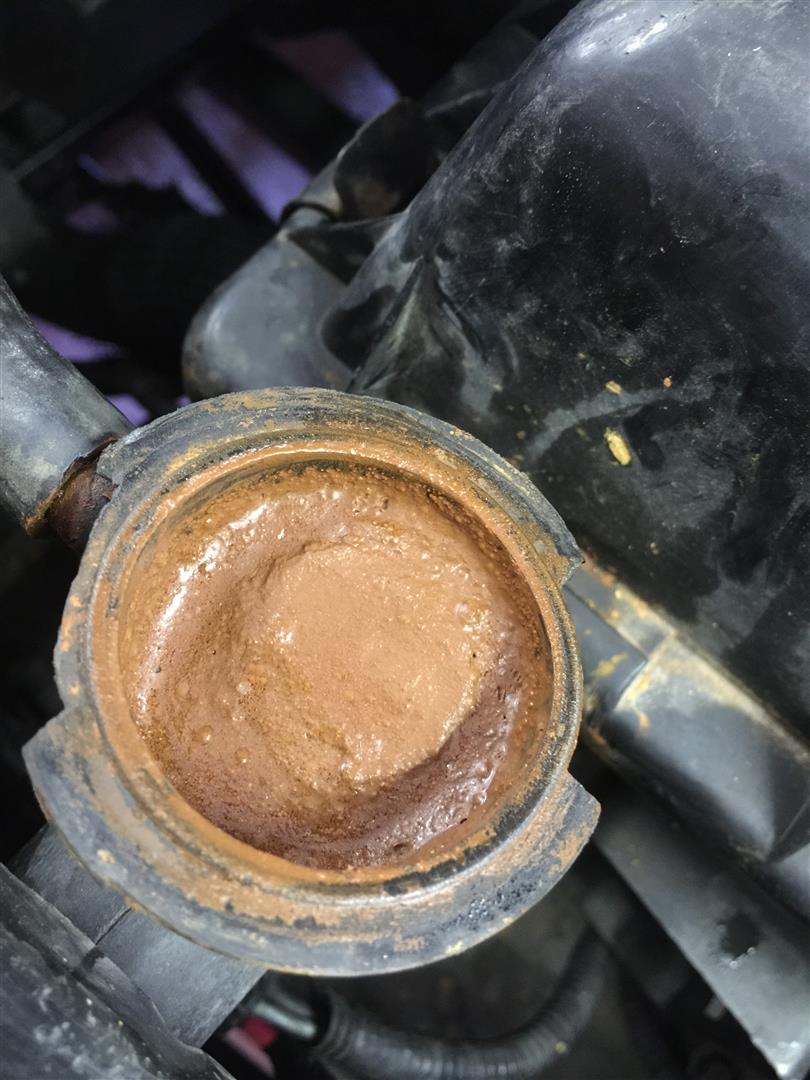Posted on 1/10/2023

A brief introduction to Car Coolant: This picture shows the worse consistency your coolant can have. Coolant fluid should flow like water. Coolant keeps your car operating at the temperature it needs to be at. Under the hood, it keeps your car from overheating and causing serious damage, like destroying the engine or causing leaks that can damage other systems. In the cabin where you spend most of the time, it affects your air conditioning and heating system. What and Where is the coolant system? The coolant system works to keep your engine from overheating. It absorbs the heat and pushes the now-hot coolant toward the radiator where it is cooled. Major parts of the coolant system include the coolant reservoir, water pump, radiator, thermostat, hoses, and cylinder head in the engine. The Coolant system is in the front end of your car and around your engine block. What can go wrong if you do not change your coolant or if the ... read more
Posted on 10/27/2022
It is important to check the fluids under your hood regularly. Sometimes it can be confusing under there and it is important to get the fluids into the right place. Colin and Pooh Bear walk you through what to look for in this video to take all the guesswork out of figuring out what fluid goes where. https://youtu.be/S_towp5Q0WM The fluids you should be checking at least once a month are: Oil Windshield wiper fluid Power steering fluid Brake Fluid Coolant Transmission Fluid- This may or may not be in your car. Some cars have an electric transmission, which does not need fluid. The reason for the monthly check is to catch a leak and to check the color and quality of the fluids. For warned is forearmed and catching things early can not only help your car but your wallet as well.
Posted on 9/6/2018
Thermostat: What is it? Every car has a thermostat. The thermostat in you car regulates the engine coolant temperature to cool off your engine. Thermostats don’t have an average lifespan. So there is no real recommended time to replace them. That is why it is important to get your check engine light read as soon as you can when it pops up or know what to do if it suddenly goes bad. How does it work? As the car heats up to 200 degrees, the thermostat opens (heat causes things to expand) and opens to allow circulation of the coolant thru the coolant system (which is a series of pipes that are housed around/ thru the engine) when the engine cools down enough (cold causes things to contract) it closes. When the thermostat goes bad it gets stuck, or doesn’t open which causes your car to overheat, or if it gets stuck in the open position it causes the car to be too cool which causes bad emissions, and bad efficiency, and accelerates wear. What are signs I need to get mine fixed ... read more
Posted on 8/15/2018

Overheating What does it mean when your car is overheating? Ruh roh, your gauge is climbing to the dreaded red H. What is causing it and what can you do to fix it before it destroys your engine or causes some very expensive bill? Cars start to over heat as they reach 250 degrees. (Cars usually run at 195-220 degrees. Just to give you an idea.) Now keep in mind that the boiling point for your coolant is 250–260 degrees. Not much wiggle room, is there? Why is it important? Cooling your engine is very important. As it is with most machines, like your computer, keeping things cool as they do their job keeps every thing from breaking down due to heat and friction. Here are some things that happen to your car as the temperature climbs. Lowers your fuel combustion efficiency Causes corrosion Starts to heat and warp the metal in and around your engine. Causes the viscosity of the liquid in your engine to change to gunk (oil, Co ... read more